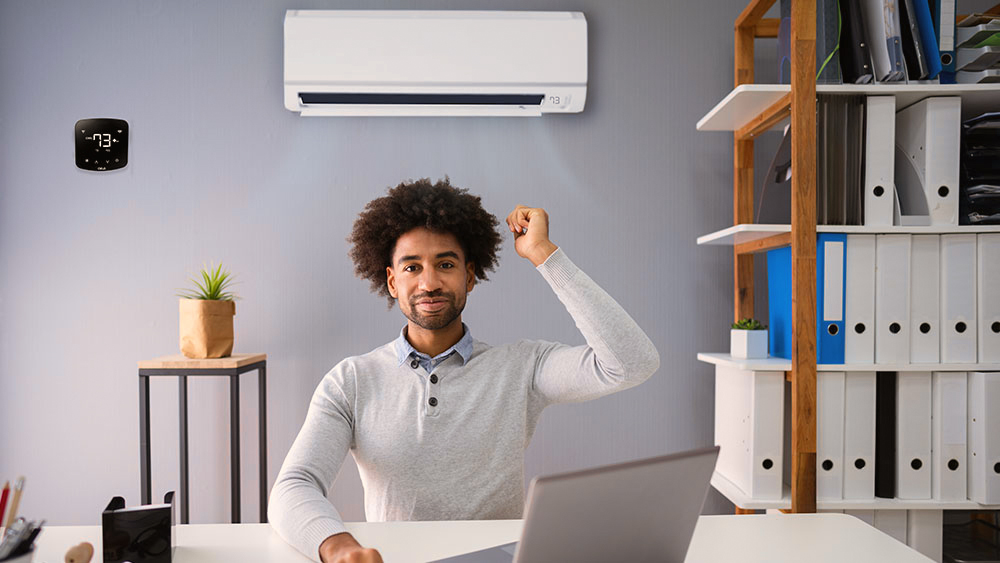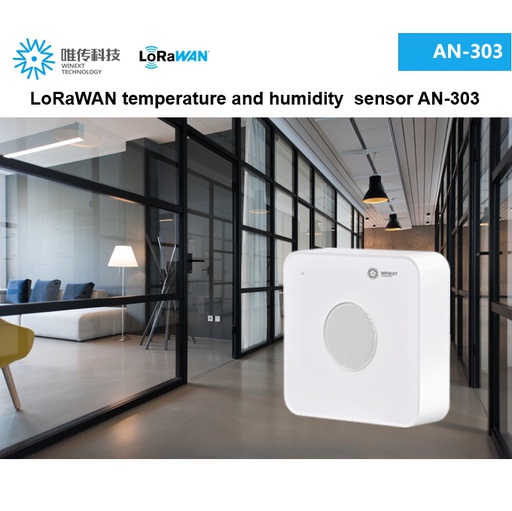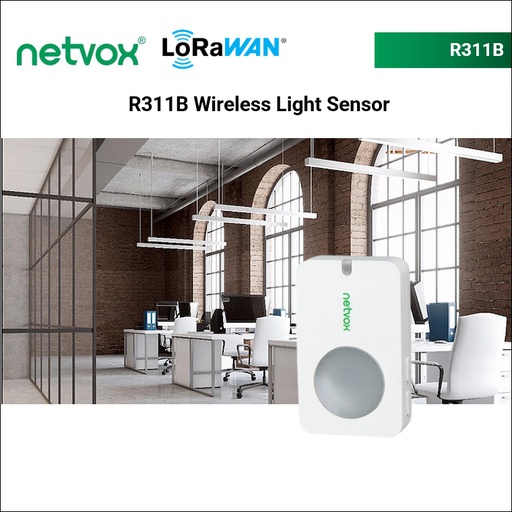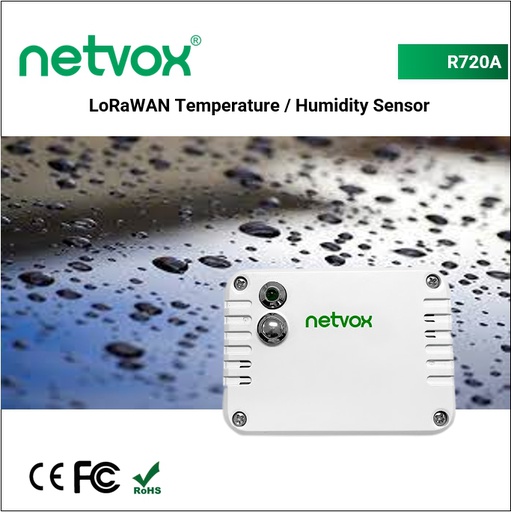What is the Ideal Room Temperature?
When speaking about something ideal, everyone has a different opinion about it – especially the ideal room temperature! Keeping specific differences and geographical variances aside, the average temperature range in a home is generally accepted to be between 68 to 76 degrees Fahrenheit. Maintaining the ideal indoor temperature is a challenge and the use of smart home devices, such as a smart AC controller, automatically maintains these average temperatures at all times.
The ideal room temperature would vary greatly due to a host of factors, which include the location, season, home design, and, personal preferences among others. Let us take seasons for example. During the winter months, the generally accepted home temperature is preferred to be around 70 degrees Fahrenheit. This gives our room a warm and toasty feeling, but not too uncomfortable. In summers though, a slightly lower home temperature of 68 degrees Fahrenheit is mostly opted for but for energy-saving purposes and a comfortable environment, it is recommended to opt for 78 degrees. While 70 degrees in summers might even feel discomforting for some, even though it is perfectly all right in winters.
Home design is also an important consideration when defining ideal room temperatures. The ideal temperature for a bedroom, living room, and kitchen would all be different. Moreover, if rooms are located upstairs, the required temperature would further fall, since upper portions are generally hotter than downstairs.
Ideal Room Temperature for Sleeping
You might be thinking that the ideal indoor temperature during sleep is the same as it was the whole day. But this is a common misconception. Sleep time ideal temperatures are generally lower than those observed during the day. This is because, during sleep, our body lowers its internal temperature by a few degrees. This means that the external temperature also has to drop accordingly to not to have a large temperature difference between the body’s internal temperature and the room temperature. The temperature during sleep, thus, has a direct impact on the quality of sleep, and by association with the quality of life. Insomnia has also been linked to temperature variances in the bedroom. This is why maintaining a suitable room temperature at night is advised.
Air conditioning settings higher or lower than your body requirement may lead to restlessness and can also affect the quality of your sleep. As per H. Craig Heller, Ph.D., professor of biology at Stanford University, “When you go to sleep, your set point for body temperature — the temperature your brain is trying to achieve — goes down,”. In case of too low or too high room temperature, your body struggles to achieve the setpoint and your quality of sleep is compromised.
It is generally held that cooler temperatures enable you to have a good night of deep, healing rest. For optimal sleep, 60 to 67 degrees Fahrenheit is the suggested bedroom temperature for the majority of the people. Exceptions are there but anything between 60 and 67 should work for a comfortable sleep. At the end of the day, personal preferences come into action and temperature range keeps on shifting from person to person.
Ideal Room Temperature for Pets
As with humans, pets also need a certain temperature range to function to the best of their abilities. This temperature depends on the type of coat a pet has, the amount of fur, breed of pet, and the pet’s lifestyle.
Even though there isn’t a one temperature that fits all formula, the thermostat should be set between 75 and 78 degrees Fahrenheit when you’re at home in the summer season. For larger breeds of dogs, 75 degrees is preferred. For older cats, it can go up to 78 degrees while in the winters, a temperature of 69 to 72 degrees is ideal. Read in detail how you can maintain the ideal temperature for your pets.
Ideal Room Temperature for Babies
Babies are particularly sensitive to temperature variations. It is imperative to provide an ideal room temperature for a baby. A hot environment makes a baby more susceptible to SIDS. It is generally accepted that a room temperature of 65 to 68 degrees Fahrenheit is the ideal room temperature for babies to be comfortable in.
Ideal Room Temperature for the Elderly
Aged-people are particularly susceptible to sickness in the case of minor temperature variations. A safe temperature is accepted to be between 68- and 74-degrees Fahrenheit for people above the age of 65. The temperature inside your home should not reach below 65 degrees Fahrenheit in any case, as that increases the risk of respiratory disease and even hypothermia if there is prolonged exposure. This is especially the case for people with lung and heart disease.
Ideal Home Temperature When Away
When you are away, temperatures can often go to extremes while the home remains unoccupied. If you have a smart AC controller, you can avoid this situation by having your home temperature to be set a few degrees above the normal, and then monitor it constantly through your mobile phone app.
If you are gone for prolonged periods in the winter, a special mode known as “Freeze Protection” can be utilized to keep the home temperature above freezing. This mode keeps the ductless AC running at a low power heat mode, which prevents the room from becoming excessively cold and from developing frost.
Why You Should Have More Control Over Your Home Temperature

According to the US Department of Energy, air conditioning takes up approximately 6% of all energy usage in the US. For homeowners, air conditioning accounts for nearly 25% of all energy expenditures. Thus, having total control over temperatures within the home is extremely important.
Reduction in temperature set points, economical use of air conditioning, and usage monitoring help in the reduction of utility bills. Smart AC controllers such as Cielo Breez Plus enable you to constantly monitor your AC temperatures even when you are not home. You can control the air conditioner with your phone from any location. If you feel the temperature is too low or too high, you can adjust it instantly, and reduce energy consumption. Automatic schedules turn the AC on or off according to pre-programmed time tables, which again, result in avoiding excessive use of the AC.
Another associated benefit, along with a reduction in energy bills, is the reduction in carbon footprint. An estimated 40 percent of all US CO2 emissions come from the demand for heating and cooling. With a rational use of air conditioner usage, carbon emissions would also accordingly fall.
The most drastic effect though of an ideal house temperature is on your comfort and health. As discussed before, a suitable temperature is beneficial for your sleep and quality of life. Instead of having to sweat all around and remain uncomfortable, an ideal temperature leads you to remain in a relaxed and calm manner throughout the day and achieve a peaceful sleep at night.
7 Best Ways to Maintain Your Ideal Room Temperature

1. Automation to maintain an ideal room temperature
Smart AC controllers provide unparalleled flexibility in HVAC control. What if you want to control your air conditioning from a far-away location? Such as from your office or your holiday destination? What if you want to set intelligent triggers for temperature and humidity?
Smart AC controllers provide all these functions and much more, at your fingertips. You can control the AC with a smartphone. Moreover, you could set up your preferred temperature, operating profile, and set schedules for the whole week. Now you won’t have to worry about constantly fidgeting with your AC again and again to maintain the ideal room temperature.
You could even set up a temperature or humidity range through smart controllers. The controller then works to maintain the room temperature within those upper and lower bounds, all by itself!
2. How the humidity control helps in achieving better room conditions
Humidity is closely linked with temperature. A humid environment would lead you to sweat and being lethargic, leading you to constantly adjust the temperature on your air conditioner. By keeping the humidity levels in a comfortable range of around 45%, temperature levels can also be then kept at ideal room levels. Dehumidifiers can be used for this purpose.
Here is more information on ideal home humidity levels.
3. Use zoning for better temperature control
Zoning systems allow you to set specific temperatures within each specific area of your home. The upstairs area can be set at a slightly lower temperature, while the lower portion can be at a slightly higher temperature. Or bedroom can all be set at a singular temperature, whereas the living room and kitchen areas can be at the same temperatures. Zoning allows temperatures to be largely similar across a home. So that the air conditioning system does not have to constantly work to equalize the temperatures between two rooms or areas.
For example, if the bedroom is at 72 degrees and the living room is at 76, and the door for the bedroom is left open into the living room, the bedroom AC will have to work extra harder to maintain the temperature and the room will become warmer. If this were a zone, this problem would not be present and the ideal house temperature will be maintained.
4. Make best use of room windows
Windows can be a source of heat into the room, through sunlight. In times of direct sunlight, the room will become much warmer than usual. A solution to this is to use window shades or apply UV filters and colored screens on the windows. This reduces the amount of sunlight and its intensity coming inside the room.
5. Maintenance and upkeep of HVAC system
Old and faulty HVAC units often have trouble keeping a steady temperature. This is due to multiple reasons, the most common of which is leaky pipes and refrigerant leaks. The efficiency of such systems is also low and they expend a great amount of energy to keep a constant temperature.
Faulty units often work at will. Meaning during some times of the day, they will be cooling or heating as intended, but be non-operational at others. This is why it is important to get your AC checked up often by a professional.
6. Regular energy audits
Utility and HVAC companies are now offering home audits from an HVAC perspective. These professionals thoroughly inspect your home and look for potential sources of heat or cold. These can be cracked windows, improperly sealed cabinets, broken doors, and broken ducts or walls. These sources serve as spots for leakage of air from the room and result in variations in temperature throughout the day.
7. Appliances placement within the room
Home appliances such as refrigerators, freezers, and computers serve as heat sources within a room. They eject heat. But it is not constant. Heat is ejected only during specific times and during heavy usage. In times such as these, an additional heat source within the room can change the room temperature very quickly, this is why it is recommended to place such appliances in rooms where an ideal room temperature is not important.
Ideal temperature is the key to a comfortable home
Most of our time is spent within the confines of our home. As already noted, temperatures can affect our mood, health, and sleep. With such a profound impact on our lives, it is sensible to keep a keen eye on the ideal room temperature and work towards maintaining it. The best way to go about is through smart air conditioning! Go over the recommendations above, and work towards enjoying the utmost comfort inside your home with the ideal room temperature!


